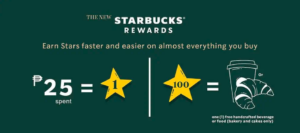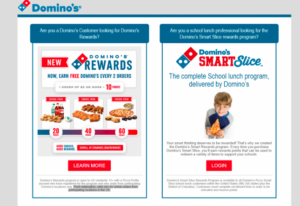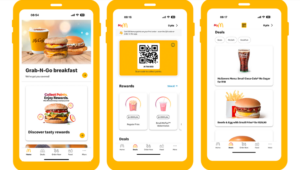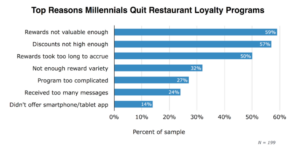- Solutions
-
-
Use Cases
-
-
-
- Our Resources
ARTICLES
- Blogs
- Case Studies
- Everything you need to know
- FAQ
DOWNLOADABLES
- eBooks & Whitepapers
- Videos
- Company
- Contact Us
- Request Demo
Use Cases
ARTICLES
DOWNLOADABLES
Fostering customer loyalty has never been more crucial for a restaurant’s success.
In a time where diners are spoiled for choice, businesses need to go beyond offering great food and service—they need to build lasting relationships with their patrons.
Designed to reward repeat visits, restaurant loyalty programs not only incentivise customers to return but also create a sense of belonging and value that can turn occasional diners into regulars.
To help set you up for success, we’ll explore how effective customer loyalty programs can be a game-changer for restaurants, driving repeat business and improved customer satisfaction.

With customer preferences and trends always evolving, loyalty programs have emerged as a powerful tool to not only attract but also retain customers.
Here’s a closer look at why these programs are crucial for a restaurant’s success:
Customer retention is generally more cost-effective than acquiring new customers. Loyalty programs improve customer retention by offering incentives that encourage diners to return.
For example, a loyalty program that rewards customers with points, which can be redeemed for discounts or free items, creates a strong motivation for customers to choose your restaurant.
When customers know they are working towards a reward, they are more likely to make your restaurant their go-to choice, even if there are other options available.
Brand affinity goes beyond recognition—it’s about forming an emotional connection between the customer and your restaurant.
A well-executed loyalty program can make customers feel valued and appreciated by offering personalised rewards and experiences, which in turn fosters deeper loyalty.
For instance, a loyalty program that offers rewards like early access to new menu items or invitations to special events can make customers feel like they are part of an exclusive club.
This sense of belonging can lead to a stronger attachment to your brand, making customers not only return more frequently but also advocate for your restaurant within their social circles.
In a market saturated with dining options, standing out requires more than just offering excellent food and service. A well-designed loyalty program can be the differentiator that sets your restaurant apart.
While other restaurants may rely solely on traditional marketing or word of mouth, a loyalty program offers a tangible reason for customers to choose your establishment repeatedly.
This is especially significant in areas where customers have an abundance of choices.
A loyalty program that is easy to use, offers meaningful rewards, and aligns with your brand’s values can make your restaurant the preferred choice in a crowded marketplace.

By tapping into fundamental human behaviours and motivations, restaurants can create programs that not only reward customers but also foster long-term loyalty.
Here’s how psychology plays a role in the success of these programs:
At the core of any successful loyalty program is the concept of positive reinforcement.
The Reward Principle, rooted in behavioural psychology, suggests that when a behaviour is followed by a positive outcome, such as earning points or receiving a discount, that behaviour is likely to be repeated.
Over time, this consistent positive reinforcement can lead to habitual behaviour, where the customer automatically chooses your restaurant because they associate it with positive outcomes.
Habits are formed when behaviours are repeated regularly and become automatic responses to specific cues. Loyalty programs can play a crucial role in transforming occasional visits into habitual dining experiences.
By providing consistent incentives, such as points, discounts, or exclusive perks, loyalty programs create a pattern of behaviour that customers are likely to repeat.
This can develop into a routine where visiting your restaurant becomes a default choice, driven by the anticipation of earning rewards. The key is to design the program so that it seamlessly integrates into the customer’s life, making it easy and rewarding to keep coming back.
The desire to belong to a community is a powerful motivator.
Loyalty programs can tap into this by creating a sense of exclusivity and shared experience among members. When customers see others participating in the program and enjoying the rewards, it indicates that the program is valuable and worth joining.
Loyalty programs can enhance this sense of community by offering rewards that are best enjoyed in a group setting or by fostering interactions between members.
For example, a restaurant might host special events for loyalty program members, such as tasting nights or member-only happy hours. These events create opportunities for customers to connect with each other, strengthening their bond with the brand.

Creating a successful restaurant loyalty program requires a careful balance of simplicity, personalisation, and diversity in rewards.
These features are what make a loyalty program not only attractive to customers but also effective in driving repeat business and fostering long-term loyalty.
The foundation of any successful loyalty program is simplicity and accessibility. If a program is too complicated or difficult to join, customers are likely to be discouraged from participating.
To ensure high participation, the enrollment process should be straightforward, allowing customers to sign up with minimal effort—whether through a mobile app, website, or in-person at the restaurant.
Customers should find it easy to understand how to earn and redeem rewards.
Clear communication of the program’s structure—such as how points are accumulated, what rewards are available, and how they can be redeemed—is crucial. A simple, intuitive system encourages more frequent participation and reduces the chances of customer frustration.
Personalisation is a powerful tool in making customers feel valued and appreciated.
By tailoring rewards to individual preferences, restaurants can create a more engaging loyalty program.
For instance, using customer data collected through the loyalty program, restaurants can identify customer preferences, such as favourite dishes, dining times, or spending habits.
This data can then be used to offer tailored rewards, such as complimentary appetisers that the customer often orders or a discount on their next visit at their preferred time.
Personalisation can also extend beyond the rewards themselves to the way they are communicated.
Personalised emails or app notifications that address the customer by name and highlight relevant rewards or promotions can make the program feel more exclusive and tailored to the individual.
A successful loyalty program offers a variety of rewards to appeal to different customer motivations and preferences. While discounts and free items are always popular, offering a diverse range of rewards can make the program more appealing and cater to a broader audience.
In addition to traditional rewards like free meals or discounts, consider offering unique experiences that cannot be easily accessed by non-members.
These could include invitations to exclusive tasting events, cooking classes with the restaurant’s chef, or early access to new menu items.
These types of rewards not only incentivise customers to participate in the loyalty program but also create memorable experiences that deepen their connection to the brand.
Another approach is to incorporate non-monetary rewards, such as priority seating, personalised service, or even recognition within the restaurant. For example, a customer who reaches a certain loyalty tier could have their name displayed on a plaque or receive a special thank-you note.
These small gestures can have a big impact on customer satisfaction and loyalty.
Offering a variety of rewards also allows customers to choose the rewards that best align with their preferences, making the program feel more flexible and accommodating.

While loyalty programs can be highly effective in driving repeat business and fostering customer loyalty, they are not without their challenges.
Here are some common pitfalls and how to avoid them:
One of the most significant risks in designing a loyalty program is overcomplicating it. While it may be tempting to create a program with multiple tiers, varied rewards, and complex rules, this can often backfire.
Simplicity is key to success.
Customers should be able to easily grasp the program’s mechanics—how to earn rewards, what they need to do to redeem them, and the benefits of participating.
If customers find the user interface difficult to navigate, they are less likely to participate.
Ensuring the program is easy to join, easy to use, and easy to understand will help maintain customer interest and participation.
Another challenge is maintaining customer engagement over the long term. Even the best-designed loyalty program can lose its appeal if customers don’t feel continually motivated to participate.
One way to maintain engagement is by regularly updating the rewards and introducing new, exciting incentives. Another strategy is to personalise the rewards based on customer preferences, making them more relevant and appealing.
Communication is also crucial in keeping customers engaged. Regularly reminding customers of their progress towards rewards, upcoming promotions, or special offers can keep the program top-of-mind.
Finally, incorporating elements of gamification, such as challenges, leaderboards, or bonus points for completing certain tasks, can add an element of fun and competition to the program.
Customer expectations are regularly evolving.
A loyalty program that was effective when first launched may become outdated if it doesn’t evolve with changing trends and customer preferences.
To avoid this, it’s critical to continuously gather and analyse customer feedback.
Surveys, focus groups, and direct feedback through digital channels can provide valuable insights into what customers like and dislike about the program.
Staying abreast of industry trends is vital too. For example, if mobile payments and digital wallets are becoming more popular, integrating these into your loyalty program could enhance the customer experience.

A well-designed loyalty program is more than just a standalone initiative; it can be a powerful component of your broader marketing strategy.
By integrating your loyalty program with other promotional activities, you can amplify its impact, increase customer engagement, and enhance your overall marketing efforts.
Here’s how:
By tying your loyalty program into other promotions and events, you can create a cohesive and compelling customer experience.
For example, you might offer double points during special events, such as holidays or restaurant anniversaries, encouraging customers to participate in both the event and the loyalty program.
Another strategy is to link the loyalty program with seasonal promotions.
If you’re running a summer special menu, you could offer bonus points for trying new dishes from that menu. This not only drives traffic during the promotion but also incentivises customers to return, knowing they’re working towards a reward.
Cross-promotions can also extend beyond your restaurant.
Partnering with local businesses or brands that align with your values can add an extra layer of appeal to your loyalty program. You could offer loyalty points for purchases made at a nearby boutique or give members access to exclusive deals with partner brands.
This creates a win-win situation where both businesses benefit from increased visibility and customer engagement.
Every interaction, purchase, and reward redemption provides insights into customer behaviour, preferences, and spending patterns. Leveraging this valuable customer data can enhance your marketing strategies.
By analysing loyalty program data, you can identify your most loyal customers and tailor marketing messages specifically to them. This could include personalised offers, invitations to exclusive events, or early access to new menu items.
The more you know about your customers, the better you can meet their needs and expectations, resulting in higher engagement and satisfaction.
Additionally, loyalty program data can help you identify trends and preferences across your customer base. If you notice that a particular dish or drink is popular among your loyalty members, you could feature it more prominently in your marketing campaigns or create special promotions around it.
Data from your loyalty program can inform broader business decisions as well, such as menu changes, pricing strategies, and even the introduction of new services.
By continuously analysing and acting on this data, you can stay ahead of customer expectations and maintain a competitive edge in the market.
Encouraging customers to share their loyalty milestones on social media not only boosts their sense of achievement but also acts as organic promotion for your restaurant.
You can promote social sharing by offering additional rewards or points for customers who post about their loyalty program achievements, such as reaching a new tier or redeeming a reward.
Creating a unique hashtag for your loyalty program can help you track these posts and build a community around your brand.
Beyond individual posts, you can leverage social media to highlight your loyalty program in broader marketing campaigns. Feature customer stories, loyalty milestones, and exclusive rewards on your restaurant’s social media channels to create buzz and encourage others to join the program.
Finally, social media can be a platform for interactive campaigns tied to your loyalty program.
For instance, you could run a contest where customers earn points for participating in online challenges, like posting a creative dish photo or tagging friends who haven’t visited your restaurant yet.
Customer loyalty is more valuable and important than ever.
A well-designed loyalty program is a powerful tool to drive repeat business, build lasting relationships, and differentiate your restaurant from the competition.
By understanding the psychology behind loyalty programs, avoiding common pitfalls, and integrating these programs with broader marketing strategies, restaurants can create a loyalty experience that keeps customers coming back time and again.
From increasing customer retention to fostering brand affinity and leveraging data-driven insights, loyalty programs offer numerous benefits that extend far beyond simple rewards.
As you consider implementing or refining your loyalty program, remember that simplicity, engagement, and adaptability are key. Stay connected with your customers, listen to their feedback, and continuously evolve your program to meet their needs and expectations.
For assistance selecting the best platform for your loyalty program, talk to NFS Hospitality.